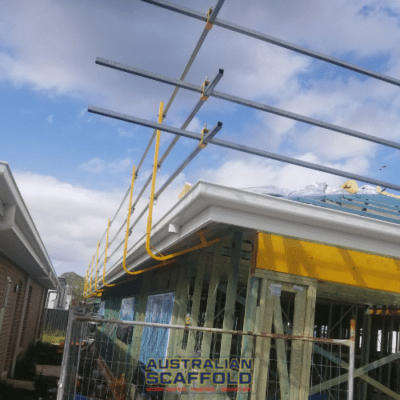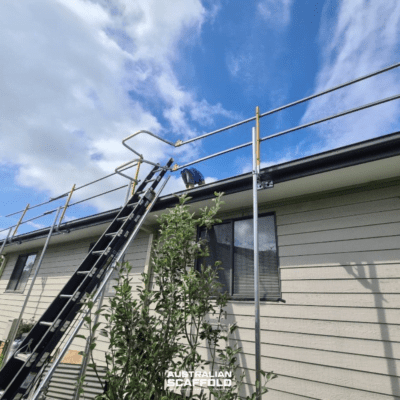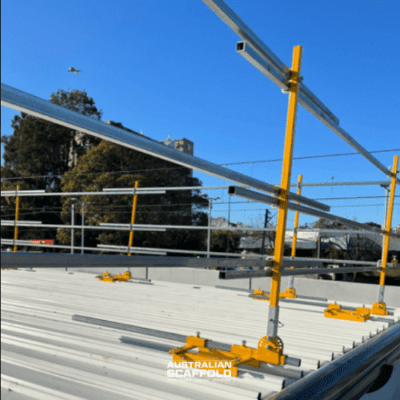What is Roof Edge Protection?
Most common causes of injuries on construction sites
Types of roof edge protection systems
- Guardrails are made of metal or other materials used to create a barrier around an edge, preventing people from accidentally walking or falling off the edge.
- Toe boards are small barriers placed at the bottom of a guardrail to prevent objects from falling off the edge.
- Safety nets: These are nets hung below a work area to catch falling objects or protect workers in the event of a fall.
- Safety harnesses: These are personal protective equipment worn by workers and attached to a safety line that is anchored to a secure point, preventing falls from heights.
- Mobile safety platforms: These are platforms that can be moved around a work area, providing a safe working surface and protecting workers from falls.
Many other types of edge protection may be used depending on the specific needs and circumstances of the job site.
Types of Edge Protection Brackets
- Tile bracket
- Corrugated iron roof bracket
- Fascia bracket
- Gable bracket
- Concrete bracket
- Wall Tie Bracket
- Rail Bracket
- Klip Lok Bracket
- Purlin Bracket
- Iron Roof Bracket
- Stepdown bracket
Why use roof edge protection?
- Safety: the primary reason is to ensure the safety of workers working at height, and edge protection helps prevent incidents.
- Compliance: In Australia, strict workplace health and safety laws require employers to provide a safe work environment for their employees. otherwise, it results in fines and legal action.
- Reputation: Employers who prioritize safety and comply with health and safety regulations are viewed more favourably by employees and the general public.
- Cost-effectiveness: It can save money in the long term by preventing accidents, expensive medical bills, lost productivity, and legal fees.
It is important to ensure your system complies with health and safety regulations and standards and that professionals install and maintain it.
Investing in edge protection can help create a safe and secure environment and prevent accidents and injuries on-site.
Selecting a Suitable Roof Edge Protection System
When choosing whether a particular temporary system is suitable, you should ensure:
- Designed, manufactured and tested per AS/NZS 4994.1
- You must have correctly provided instructions for using the system.
- Instructions should include safe installation/dismantling.
- Suitable configurations, acceptable roof types, and system limitations.
- The site can accommodate the safe erection and disassemble of the system, e.g.
- Is the system suitable for the roof-supporting structure?
- Will it maintain the system’s designed integrity and strength? Consult with competent persons if unsure.
- Does the system follow the roof’s profile?
- Will it ensure no gaps which a person could fall through?
- Can workers safely access and exit from the roof without stepping over or through the guardrail system?
Note: Scaffolding may be used as a temporary system – if the scaffold complies with Australian Standard AS/NZS 4994.2 Temporary edge Protection, Part 2: Roof edge protection- Installation and dismantling.
Before installation/dismantling
Before the erection or dismantling of the temporary Roof Edge Protection System, make sure:
- A competent person develops a method for installing and dismantling in consultation with all relevant parties. The method should describe the tasks and work sequence to protect users from falls. The methodology should also define any exclusions zones and provide a layout plan. Methodology that requires work above 2m in height should be documented in a site-specific Safe Work Method Statement.
- Confirm the location and voltage of overhead powerlines before the commencement of work. Maintain safe distances and ensure controls are in place as per the Safeworks Code of Practice for work near overhead powerlines.
- Workers receive the necessary instruction, training, and supervision before installing and dismantling the edge protection system.
Installation/dismantling of Roof Edge Protection
Only persons with the required knowledge, skills, training, correct equipment, the manufacturer’s recommendations, and the developed methodology should install or dismantle the edge protection system. Temporary edge protection systems should include:
- Top, mid and bottom rails or toe-boards with gaps not exceeding 450 mm. Check impact loads of toe-boards if used in place of bottom rails.
- Toeboards or mesh infills that prohibit tools, materials or debris from falling unless exclusion zones exist.
- Ensure no space between the roof edge and guttering – position guardrails 100mm beyond the roofline.
- A distance of not less than 150mm and not greater than 275mm between the roof cladding.
Do you need Edge Protection in your city?
Other questions you might have:
- What do guardrails mean?
- Edge Protection for Solar Installation
- Top 5 Things to Consider Before Installing Solar Panels On A Roof
- Edge Protection for New Homes Building
- Guardrail To A Railway
Need Edge Protection Equipment?
Australian Scaffolds is available day and night, seven days a week. Our expert team of scaffolders has decades of experience. We strive to make complex-simple. To find out more, call 1300 919 905. Or email Daniel at daniel.butlin@australianscaffolds.com.au
Our Guarantees
- Provide after-sales service
- Treat all customers with respect
- Stand behind the quality of our products
- Formulate solutions to any work-related problem
Last News
- Butlin Maxi Prop Brochure
- Safe Work Australia – Scaffolding
- Where should I position my Acrow Props
- Prosecution Details | Prosecutions Database | Department of Commerce
Shipping
Your order is important to us, and we make every effort to process and deliver your order as promptly as possible. Orders within Australia will be shipped via our carrier unless you pick up or specify your carrier.
- Dispatched the next business day after receipt of payment.
- Orders are subject to the availability of stock.
- Expect delivery within 1-5 business days.













